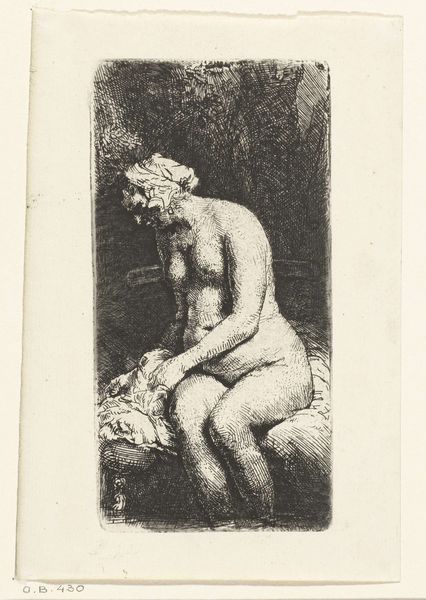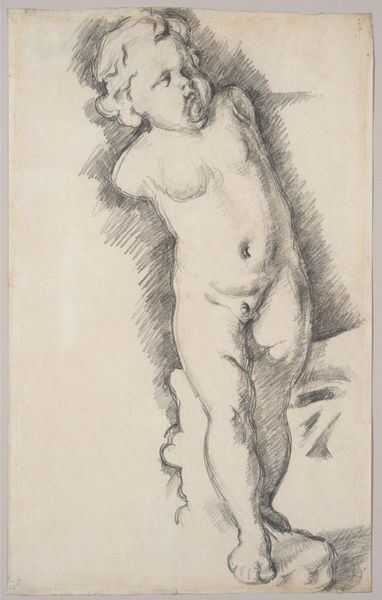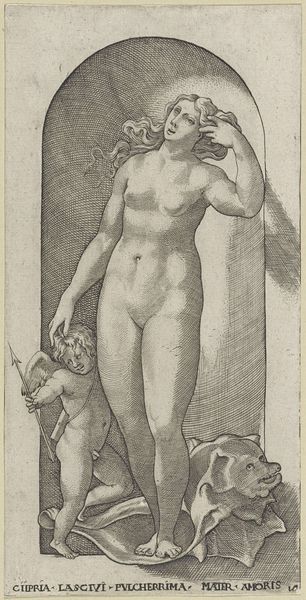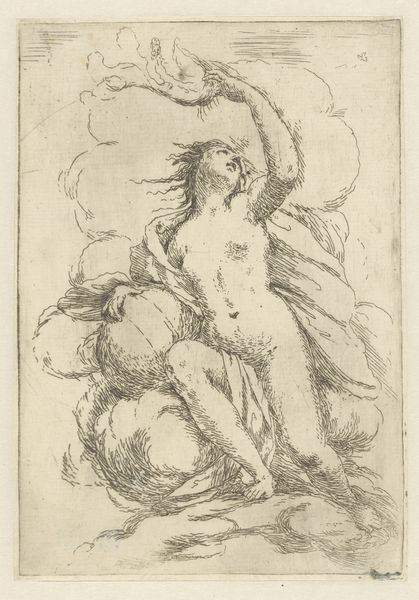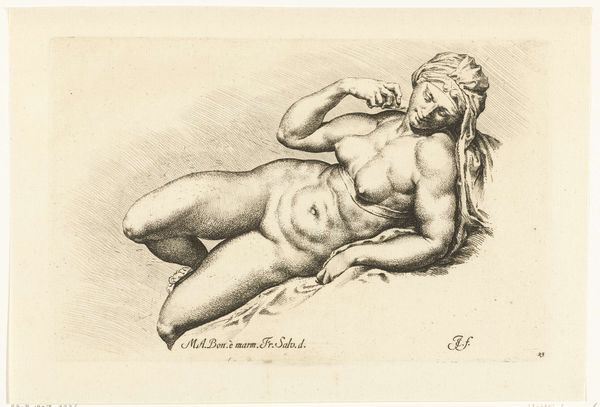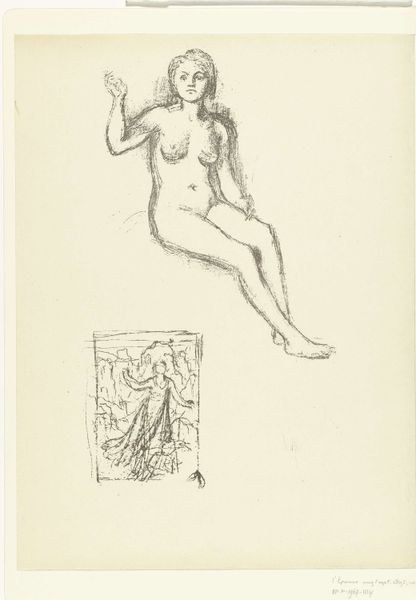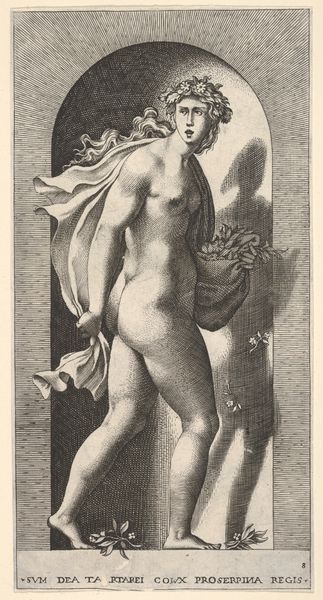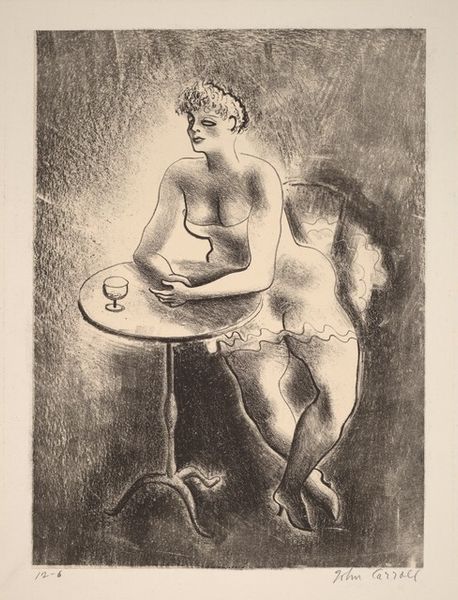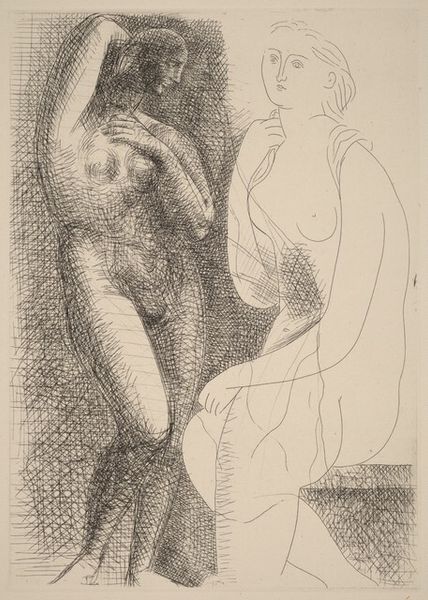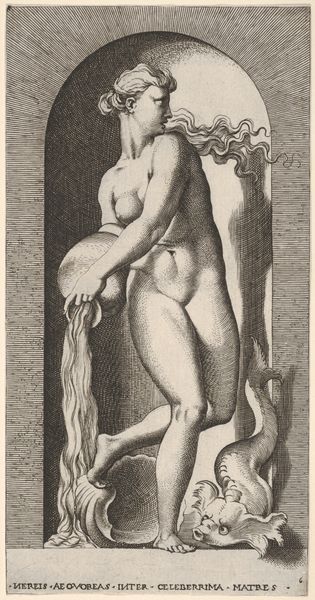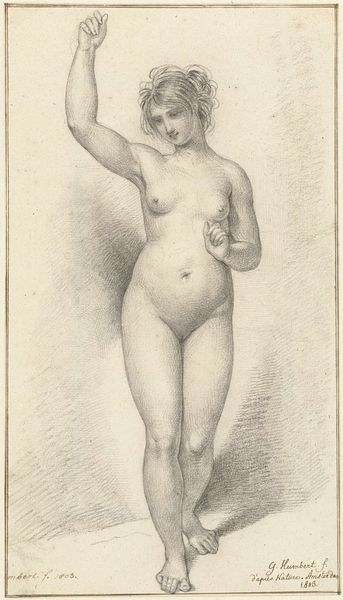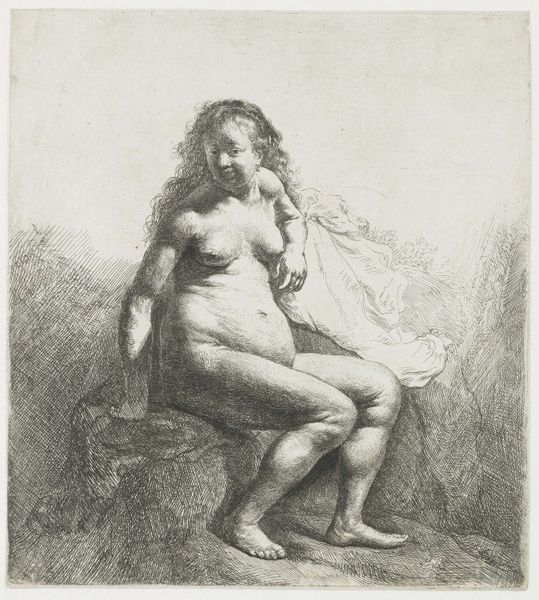
print, engraving
#
baroque
# print
#
figuration
#
history-painting
#
nude
#
engraving
Dimensions: height 188 mm, width 100 mm
Copyright: Rijks Museum: Open Domain
Jan de Bisschop made this etching, *Hurkende Venus*, in the 17th century. The artist created the image by drawing into a wax-covered metal plate, which was then submerged in acid. The acid bit into the metal where it had been exposed, leaving behind an incised line. This process allowed de Bisschop to create a print with incredibly fine detail. Looking closely, you can see how the etched lines vary in thickness and density. De Bisschop used these variations to create areas of light and shadow, giving the figure a sense of volume and depth. The labor involved in creating an etching like this is considerable; it’s a testament to the skill and patience required. Etchings like this were often made in multiples and collected in books for scholars to study, reflecting a growing interest in classical art and knowledge. This print sits at the intersection of fine art and craft, inviting us to consider the social and cultural significance embedded in the process of its creation.
Comments
No comments
Be the first to comment and join the conversation on the ultimate creative platform.

